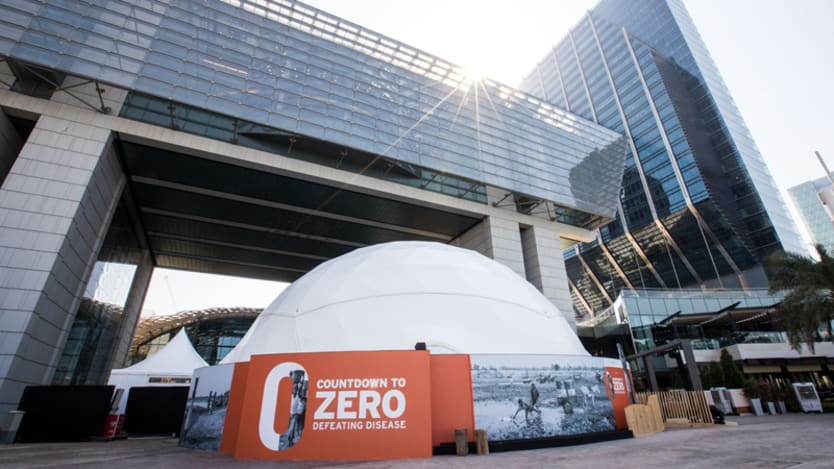
ABU DHABI — The idea emerged from a time lag. In order for a disease to be eradicated, the world must be without new cases for three years. So by the time Smallpox became the first and only eradicated global disease in 1980, three years had passed since the last case — “ancient history,” in the public mind.
The world is again on the cusp of eradicating disease: guinea worm and polio. This time, the American Museum of Natural History and the Carter Center partnered to prepare the public in advance. “We thought rather than wait for guinea worm to be fully eradicated, or polio, both of which are very close, to build an exhibition that drives public awareness so that people see the successes as it happens,” Mark Siddall, a curator at the American Museum of Natural History, told Devex.
The resulting exhibition, Countdown to Zero: Defeating Disease, opened this week in Abu Dhabi, after premiering in New York in 2015, with previous stops in Atlanta and London. The pavilion is aimed at a potentially catalytic audience here. Abu Dhabi was one of the first and largest donors to eradicating guinea worm 30 years ago. The crown prince, Sheikh Mohammed bin Zayed Al Nahyan, has been intimately involved in polio eradication, and is today gearing up to launch another round of philanthropy to eradicate “last mile” diseases for which eradication is in sight but still far from guaranteed without a firm push.
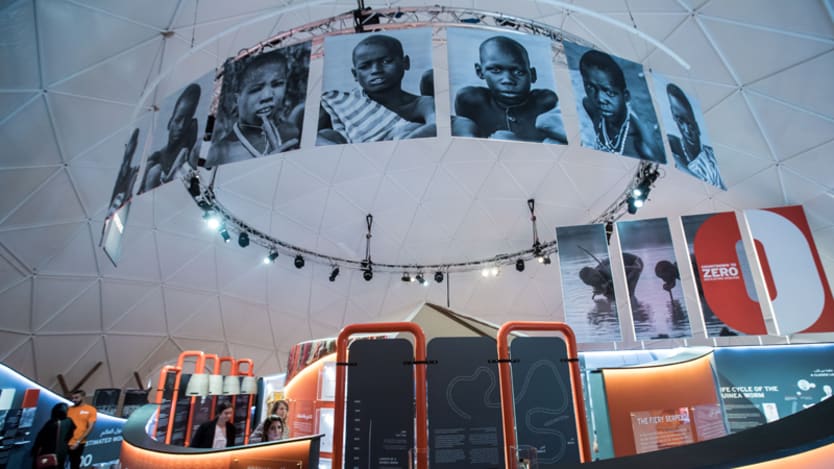
The UAE’s involvement has been an example of “catalytic philanthropy,” Douglas Nelson, a member of the board of directors at the Carter Center, told Devex. A contribution to eradicating guinea worm from the country’s founding leader Sheikh Zayed Al Nahyan “really enabled this effort to get to scale, and it also gave the Carter Center and others the credibility because of that support to go and seek resources elsewhere, in the U.S. and around the world,” he said.
In November, Abu Dhabi will host a summit aimed at pushing through to the finish line on guinea worm, as well as polio, malaria, river blindness, and several other neglected tropical diseases. “They have been with us in this last mile,” said Nelson. “Having support at the tail end, and at the beginning, is the strategic opportunity philanthropies have to make a huge difference.”
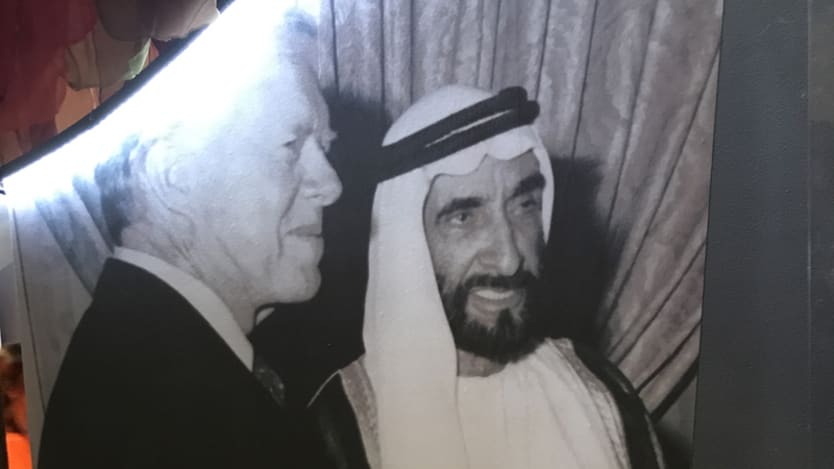
Devex was part of an exclusive media tour of the exhibition, which walks through the natural life of guinea worm, and efforts to eradicate it. So far, 2017 has seen just nine cases of the parasitic infection, down from 3.5 million in 1986.
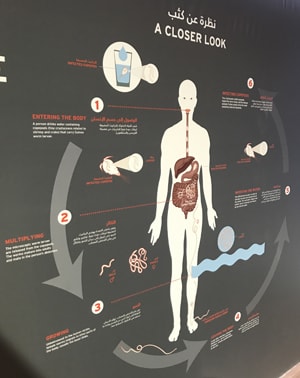
Guinea worm, whose scientific name means “little dragon from Medina,” lived with humanity from West Africa to South Asia for several millennia. The worm enters the human body through drinking water. Once in the host, a mother worm grows up to a meter long before emerging through a painful blister. Infected people seek the cool of water to comfort the pain, and as the worm exits the body, she releases new larvae into the water, restarting the parasite’s lifecycle.
Efforts to eradicate the disease have yielded lessons that are now applicable across a range of global health challenges, said Nelson. Guinea worm has no treatment, cure, or preventative drug — and its near-eradication has been a test case of how to reduce infections almost entirely through public health education and awareness.
Affected communities learned to filter their water, to avoid drinking water sources when infected and to map cases within their communities.
The exhibition includes evidence from each component of that simple but effective strategy: cloth books used to explain the disease to communities, locally drawn maps of villages and affected households, and water pipes used to filter water for nomadic communities.
When community members did become infected, patients were encouraged to go to case treatment centers, staffed by thousands of locally trained volunteers around the world. The worm is then extracted in a controlled environment over a period of several weeks — crucially, safely away from the drinking water source.
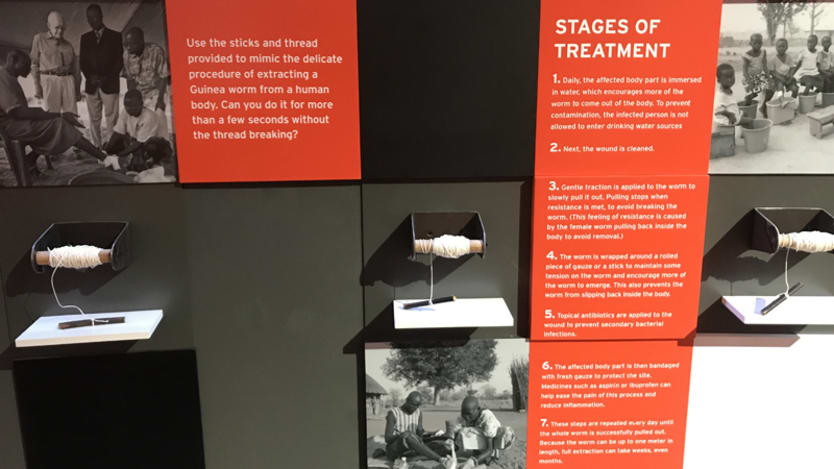
Armed with those lessons from the past, the exhibition ends with the next disease targets on the horizon, including polio, malaria, river blindness, trachoma and lymphatic filariasis. While progress has been made to control each, advocates agree the “last mile” is the hardest part — one reason that public awareness and support is vital.
As Alanoud Madhi, senior associate in the Office of Strategic Affairs at the Crown Prince Court, put it: “The journey of eradicating disease does not end” with any one condition.
Read more international development news online, and subscribe to The Development Newswire to receive the latest from the world’s leading donors and decision-makers — emailed to you free every business day.
